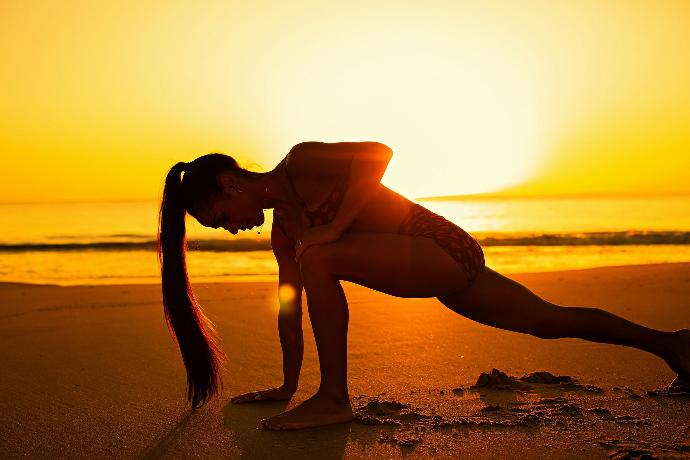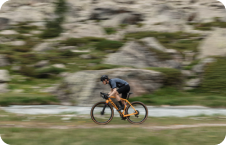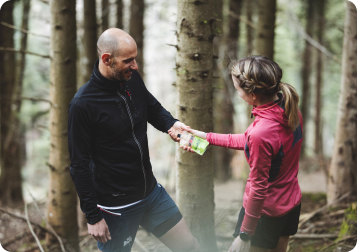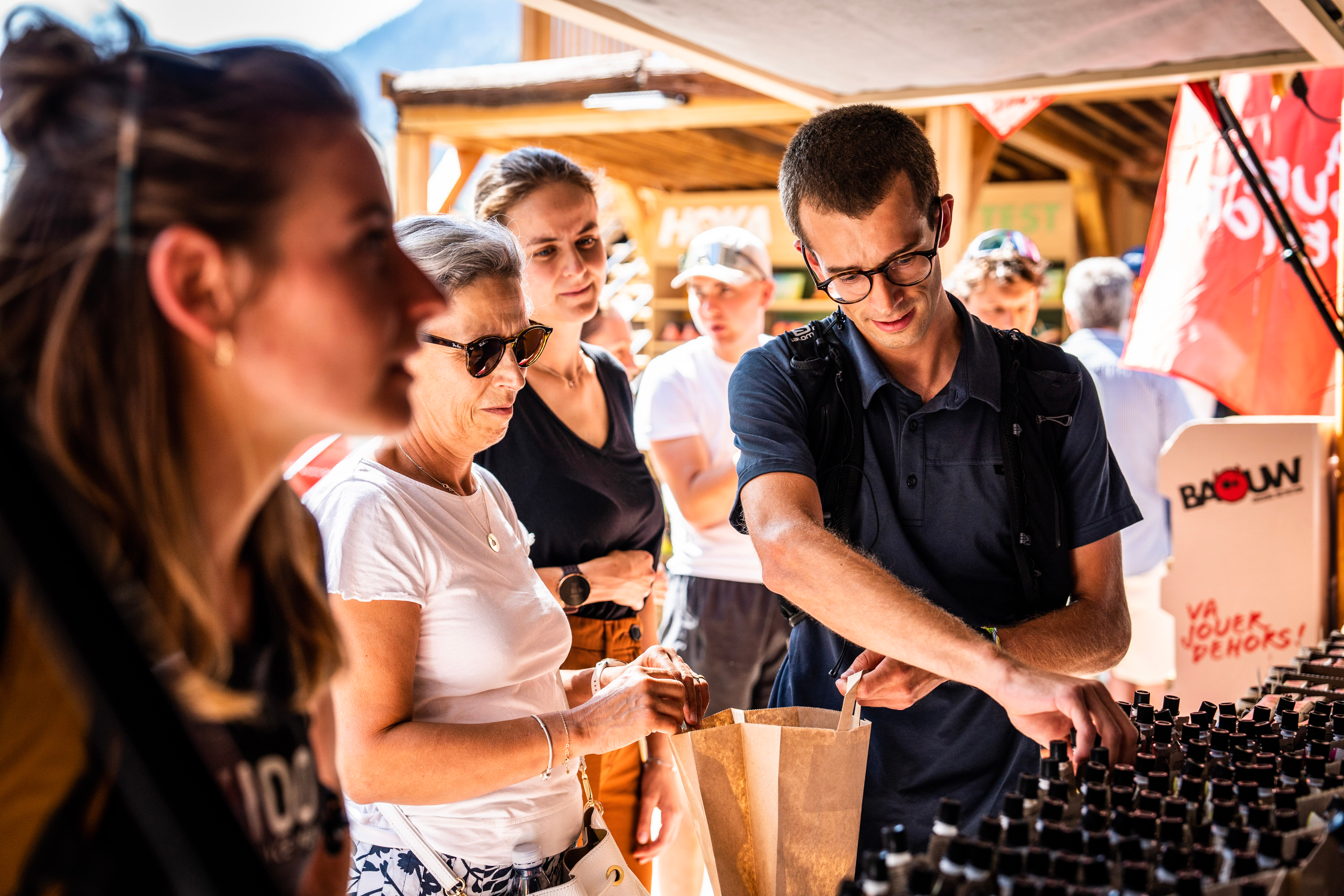Sport and stretching are supposed to go hand in hand... We know it, we've all read and heard it, but we sometimes find it hard to apply this principle! Yet stretching is an integral part of physical preparation and recovery after exercise. Whatever your level in your discipline or the intensity of your training, stretching is an essential part of your sporting routine. Incorporating stretching into your routine helps to improve your flexibility, reduce the risk of injury and optimise your performance. Despite all this, stretching is often misunderstood or neglected - in other words, quickly forgotten! So, or performing flawlessly on the trail, this article will shed some light on the role and benefits of stretching in sport.
The two main types of stretching for sportsmen and women
First of all, there are two main types of stretching used by sportspeople: static stretching and dynamic stretching. Each has its own specific features and objectives, so it's important to know in what context they should be used.
Static stretching
This type of stretching involves holding a position for a certain length of time (generally between 15 and 30 seconds) in order to gently pull on the muscle. This is the best-known form, designed to increase flexibility by lengthening muscle fibres and tendons. These stretches are most often applied after exercise to encourage muscle relaxation and recovery. Be careful, though, as they are not a 100% guarantee that you will avoid muscle soreness or even cramp after physical effort...
For example, a typical static stretch for the quadriceps is to hold your foot behind you with your hand, bringing your heel towards your buttock. The muscle is stretched slowly, without jerking.
Dynamic stretching
Unlike static stretching, dynamic stretching involves controlled, repetitive movements that bring muscles and joints to their full range of motion. You'll have noticed that dynamic stretching is often used as a warm-up: and rightly so, as it boosts blood flow and prepares the muscles for exercise. And better blood flow means more oxygen to the muscles, and therefore more energy. Dynamic stretching involves movements that are generally fluid and never forced.
Examples include leg swings, where you swing your leg back and forth or from side to side to stretch your hip and leg muscles.
Il te faut donc retenir qu’avant une séance, ils vont préparer tes muscles à l’effort à venir, tandis qu’ils encourageront une meilleure récupération s’ils sont effectués après la séance. Mais n’oublions pas les étirements quotidiens, ceux qui ne sont ni précédés ni suivis par une séance de sport. En gros, ceux-ci sont destinés à ton assouplissement global : à rendre tes muscles plus élastiques, en somme !
The benefits of stretching in the overall practice of sport
Stretching is a divisive issue, sometimes seen as contributing fully to your performance, sometimes as counter-productive. On the other hand, researchers seem to agree on one point: they can be integrated into a sports routine, provided they are done correctly and at the right time. Gentle exercise is one thing, risking muscle strain is another! But what are the benefits for your body? Find out below:
- Improved flexibility: regular stretching increases the range of joint movement, so you can perform movements more easily and fluidly (in other words, you won't feel all rusty!). It's the ideal way to avoid injuring yourself if you make sudden or poorly controlled movements during your sports session!
- injury prevention: proper stretching prepares your body for the effort ahead, and it's a well-known fact that more supple muscles absorb the shocks and stresses of physical effort better. The result is a reduced risk of muscle tears and strains. .
- Improved blood circulation: stretching, particularly dynamic stretching, increases blood circulation in the muscles, bringing more oxygen and nutrients to the tissues. The result is better preparation of the muscles for exercise, as well as easier post-training recovery.
It should be stressed, however, that diet energy reserve, management, level of fatigue at the time of the session,, hydration, etc., are all factors specific to each athlete which have a more or less direct impact on the action of stretching. That's why it's so important (and we insist!) for stretching to be tailor-made! After all, some seasoned sportspeople don't feel the need to stretch, either on a daily basis or before or after their sports sessions.
Before or after your sports session: when is the best time to stretch?
Although the timing of stretching depends on the type of activity you're doing and the objective you're aiming for, here are some general guidelines to help you structure your session.
- Before sport: static stretching is not recommended before an intense sports session. This is because they can temporarily reduce muscle power and strength. Dynamic stretching, on the other hand, is ideal for warming up muscles and preparing your body for exercise. They gradually increase the range of movement and stimulate blood circulation without fatiguing the muscles.
- After sport: this is the ideal time for static stretching. After exercise, the muscles are still warm, making muscle-relaxation exercises more effective and more enjoyable. It also speeds up recovery and reduces post-training stiffness.
As you kown, at Baouw, we're fully behind endurance sportsmen and women from all walks of life, and this is reflected in the creation of our super . But because we're also thinking about your well-being, we'd like to mention the rare cases in which stretching is contraindicated: in the case of acute pain or injury, if you're affected by hyperlaxity (joint hypermobility) or if you do it completely cold. That's why we advise you to start with a light warm-up before moving on to stretching, even if it's dynamic.
Whether you want to improve your flexibility, prevent injuries during exercise or optimise your recovery, properly chosen and performed stretches are complementary to your sports session. Depending on your session, you'll need to use dynamic stretching to warm up and static stretching to recover after exercise. The important thing is to know the right practices, but also to know yourself and to exercise moderation. And to make your workout as enjoyable as possible at the end, you can count on our gluten-free bprotein bars designed to help you recover. Combining sports nutrition with tasty pleasure: a challenge we love to take up every day!












